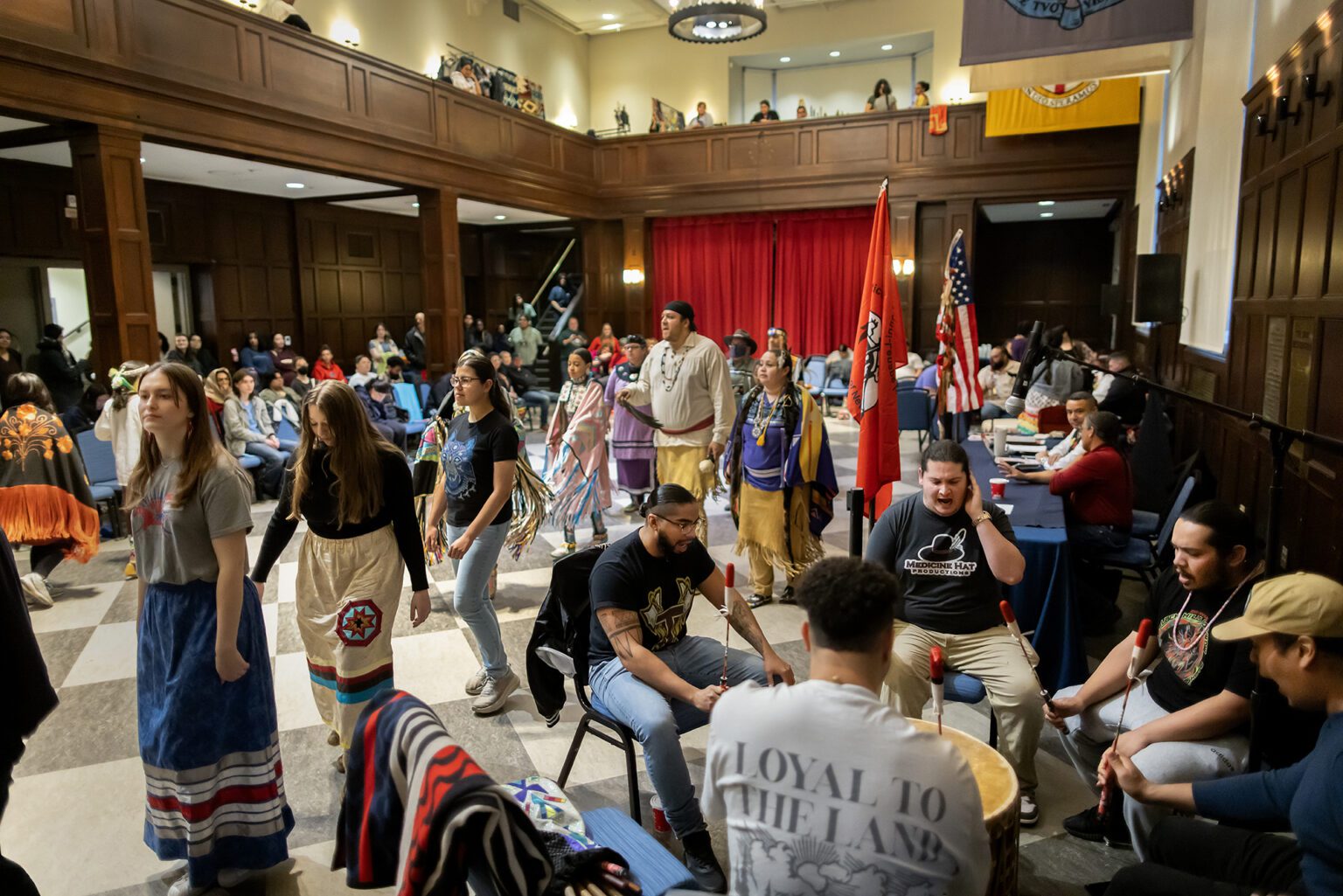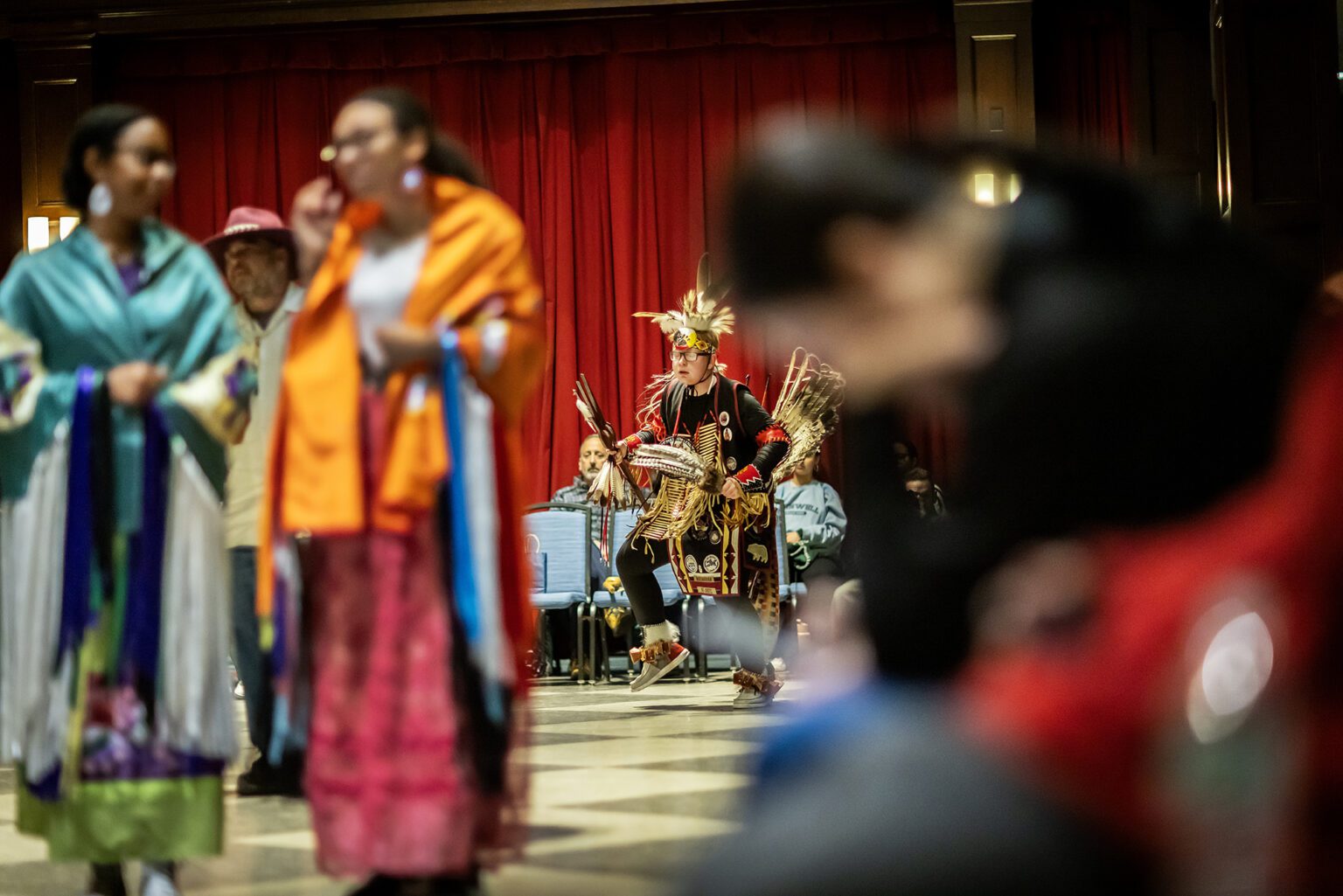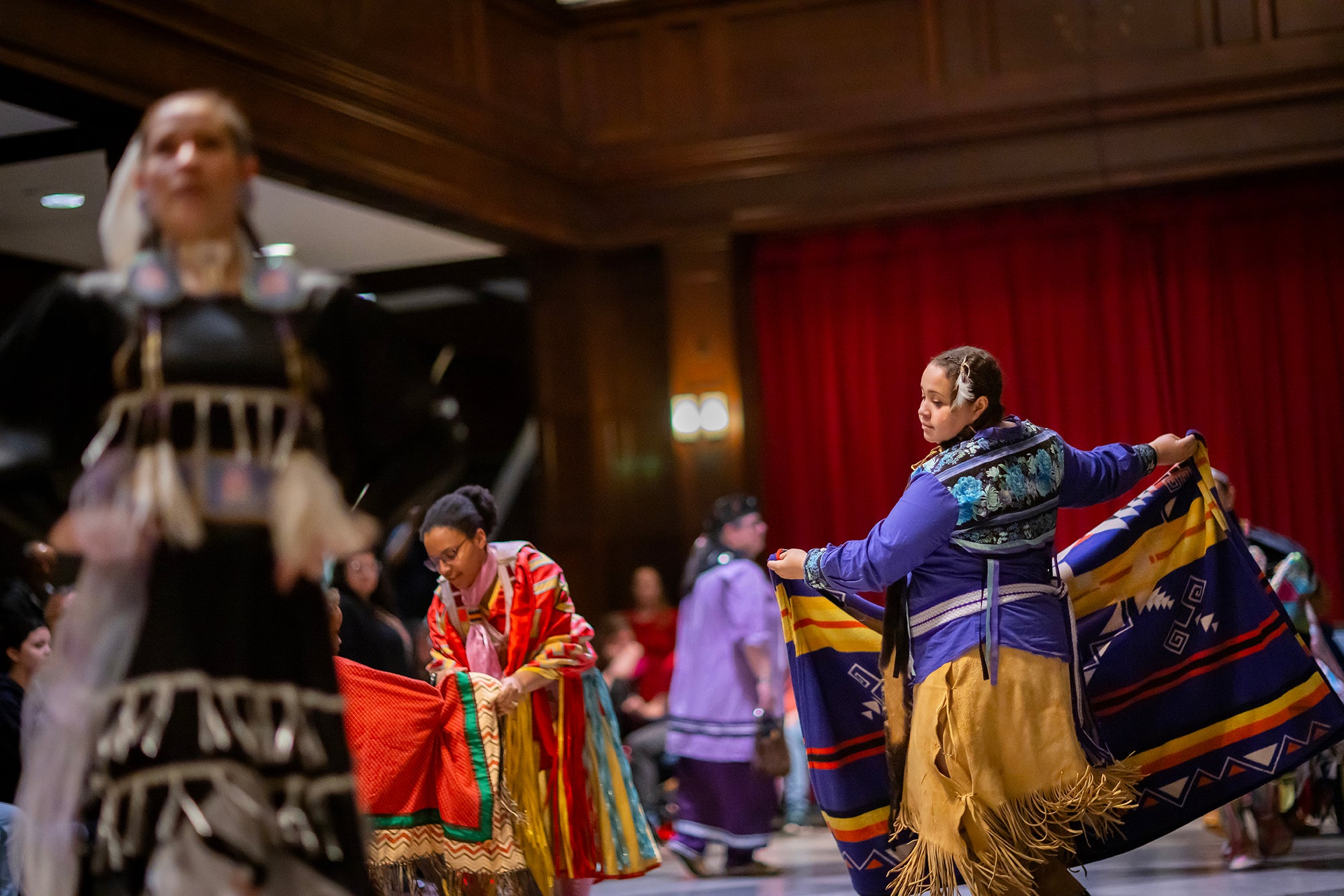A powwow begins with drums, as the cascading voices of musicians call dancers in for the Grand Entry, the first moment when they are called into the sacred arena. At Penn’s 13th annual Powwow, which also marked the 40th anniversary of the Greenfield Intercultural Center and the 30th anniversary of Natives at Penn, an Indigenous student organization formerly called Six Directions, Brian Weeden, chairman of the Mashpee Wampanoag tribe, and his wife, Keturah Peters, a School of Nursing alumnus who is also Mashpee Wampanoag, led the group as head dancers.
Penn’s Powwow emphasizes diversity while honoring the Nanticoke Lenni-Lenape tribe. At the 2024 ceremony, Natives at Penn honored two Lenape elders, Lewis “Gray Squirrel” Pierce and Ann “Wolf Spirit Woman” Dapice. “It is always important to understand that Native communities exist here,” says Valerie De Cruz, who has served as director of the Greenfield Intercultural Center since 1997. “They are not just part of history. They occupy land here; they exist here in our community.”
When a stranger walks on new ground, it is tradition to seek out their hosts, De Cruz says. “You want them to know that you understand this is their territory and that you understand that you are a guest.”

For Ryly Ziese, a third-year at the Wharton School from Cookson, Oklahoma, this is important. Ziese, who is Cherokee Nation, is on the Natives at Penn board as treasurer and helped to organize the Powwow. “Yes, we are Natives at Penn,” she says, “but it’s important to ask the people whose land we are on.”
Through her involvement, Ziese was able to meet people from different tribes. “Coming to Penn, I had very set mind of what a Native person was, just because I grew up around the same type of people,” she says.
“It’s been very eye-opening,” Ziese says. “I’ve enjoyed learning about all the different cultures that either blend with mine, or maybe sometimes contradict what we believe.”
“Our goal is really to support Native, Indigenous, and First Nations students,” De Cruz says. “We center students in exploring what it is they want to do on campus, in terms of building their leadership, raising awareness, and increasing understanding of Native traditions.”

According to Natives at Penn, more than 20 tribes, nations, and peoples are represented by Penn faculty, students, and staff. Now a registered nurse in Mashpee, Peters says that Natives at Penn helped her adjust to University life.
Wearing a fringed buckskin skirt and carrying a blanket, Peters led the first women’s intertribal dance. The women traveled clockwise in a circle, following the path of the sun.
Traditionally, both feet remain on the ground during powwow dancing, said the event’s emcee, Keith Colston of the Tuscarora and Lumbee tribes. Dancers took small steps forward, moving forward with the balls of their feet with heels elevated and knees bent, following the beat of the drum.
With more than 100 people in attendance from Penn and beyond, Colson guided the audience through the Powwow, offering education and protocols. Certain dances and ceremonies are for specific groups only, he said. In the women’s fancy exhibition, twirling dancers in long, fringed shawls made 360° turns in place; in the jingle dance, a newer dance from the early 20th century, women wore bugle-shaped ornaments, tobacco tin lids rolled into cones and sewn to their skirts, which clinked as the dancers moved. The men’s traditional dance is for warriors, Colson said. These dancers wear regalia made from birds of prey and cowbells tied around the ankles.

